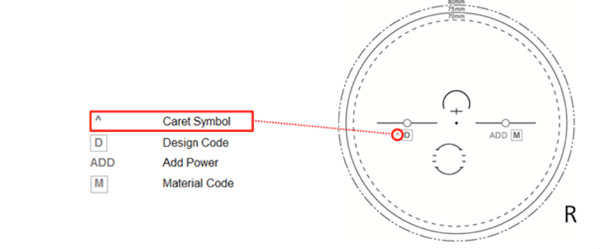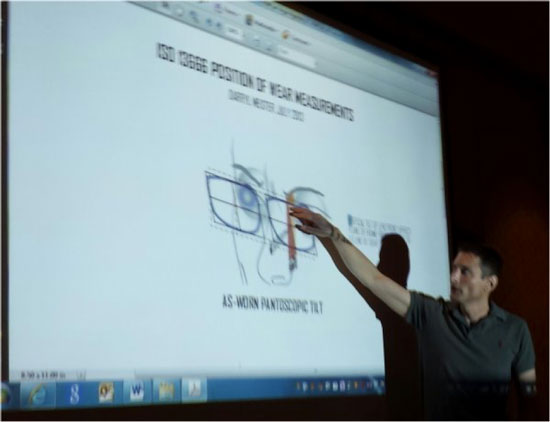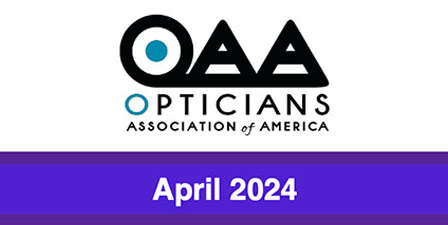As chairman of the ANSI Z80.1 spectacle lens committee, I am excited to announce that a new 2015 revision has just been published and is available for purchase at the ANSI online store.
ANSI Z80.1 provides recommended tolerances and quality guidelines for prescription ophthalmic lenses in edged or assembled form. This standard is targeted for updating every five years to keep current with industry innovations and product and process evolution. This version obsoletes the 2010 version. In a past Opticians Handbook article I reviewed the evolution of ANSI Z80.1 and explained the revision process.
I have been actively involved in helping to write ANSI Z80.1 standards for 25 years, and I am especially proud of this most recent revision. I have also been an active member of the ANSI Z80.3 (Sunglass) Committee since the early 1990s and an ANSI Z87.1 (Safety) Standards committee member since 2010. A revision of the Sunglass standard is expected before the end of the year, and the 2015 Safety standard was published in June.
Background
The ANSI Z80.1 committee was established in 1956 and published the first standard in 1964. That standard covered factory made glass, mass-produced lenses and is interesting to examine as the first ANSI Z80.1 Standard. For those interested in learning more about this and other revisions before 2015, I have posted information here.
ANSI Z80.1 2015 Revisions
Compensated Powers and Position of Wear
Perhaps the most pertinent series of changes in the 2015 Standard for those reading this article pertains to the topic of “position of wear” and specifically new voluntary markings on lenses that have been designed with compensated powers. Throughout the new standard, changes were made to address better product such as Freeform products with “as worn correction”. For lenses that have been fabricated with compensations that may alter the measured values enough to differ from the Prescription, a means to identify these lenses has been defined.
A new voluntary marking (caret symbol ^) will soon be evident on lenses designed with compensations to alert ECP’s of this fact. Since lenses that have been compensated for the position of wear may measure significantly different that the prescription, this permits one to be aware before trying to measure/duplicate. In the new revision, section 9.1.2 specifies the use of the caret symbol as an optional marking:

In the appendix pf ANSI Z80.1 – 2015 are new definitions and illustrations for the terms Faceform, Pantoscopic Angle and Vertex distance as they pertain “as-worn” attributes as experienced by the wearer. These were developed in the Vision Council lens Technical Committee that I also chair, and most of this work was authored by the late Darryl Meister. This is one of his last contributions before his untimely death last year and is a fine example of his teaching talents in this field.

Sunlens Darkness, Polarized Axis Uncut Prism
Other changes of interest pertain to specifying a limit on the darkness of lenses when driving. The ANSI Z80.3 Sunglass standard limits this to not < 8%, but because of measurement issues for RX’s this was never addressed in Z80.1 until now. With the new requirement, lenses of Plano configuration may be used as limit samples for your operation, as these are easily measured. This highlights that Rx’s should follow the same darkness and color limits required for driving, and is an important consideration when ,p;dispensing dark lenses.
Tolerances for placement of polarized film relative to the intended horizontal position on the lens were adopted, along with minor clarifying wording changes to the uncut prism requirements in this revision.
Axis Tolerance
Finally of note, the cylinder Axis tolerance table was further adjusted to indicate that lenses with intended cyl powers <0.12 have no tolerance on the axis direction. In 2005, the ANSI Z80.1 document relaxed the tolerance for cyl’s under 0.5D to 14 degrees from 7 degrees, due to extensive study that this was undetected by the wearer and needed because of measurement limitations.
Rx ?
This revision exercise for this 2015 version led to discussions so fundamental, that we even examined what is meant by an Rx (Prescription) as it pertains to the use of this standard. If one refracts online and determines a prescription, should this be considered an Rx? If one adjusts a lens to obtain appropriate focus, is this applicable? After much review, we decided to adopt the FDA definition for a spectacle lens prescription, as defined in 16 CFR 456.1 which states the prescription is “derived from an eye examination” and not a self - refraction:

Power Measurements and Focimetry
Another change in the Purpose of this standard pertains to an acknowledgement that “power, prism and axis tolerances in this standard are subject to measurement limitations associated with the accuracy and repeatability of the current state of the art focimetry…” This phrase is an important acknowledgement of the difficulty of being certain of the exact dioptric value of a lens using commonly available focimeters. The Vision Council Focimeter study published last year on variations in Add power that can be expected on such devices was a recent example of what the industry has faced for decades. For those readers who are members of the Vision Council, the study may be found in the members’ section.
In the link below, I have posted some past ANSI-related documents technical documents that I have authored, should you be interested:
http://www.dickwhitney.net/DickWhitneyOphthalmicLensTechInfo.html
ANSI Z80.1 – 2015 Available
I have not captured all of the changes made for the new revision, and I encourage you to purchase the ANSI Z80.1 – 2015 standard to learn more. ANSI Z80.1 is an important reference and learning tool, which reflects the most recent recommendations from industry experts with the goal of providing guidelines to produce quality eyewear. We encourage feedback to the committee, and we are looking forward to hearing from you as we start work on the 2020 draft standard.
I wish to thank Rick Tinson (Vice Chair) and Dr. Karl Citek who assisted with editing the revision. I also wish to thank the Vision Council, which serves as the Secretariat to the ASC Z80 Committee.
Feel free to contact me if you have any questions or input: [email protected]













